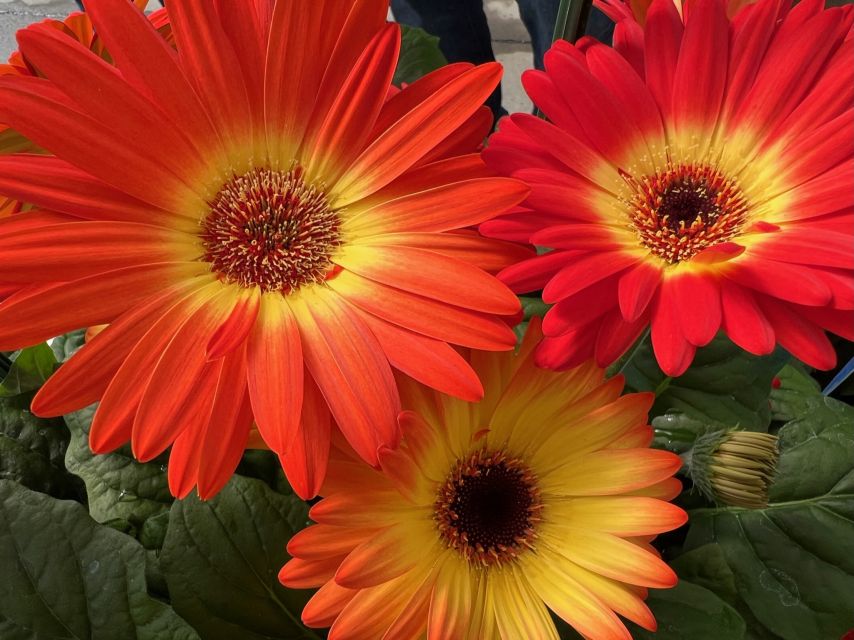Allan Armitage Looks Back at the 2023 California Spring Trials, and Looks Ahead

Gerbera ‘Majorette Orange & Yellow Bicolor Dark Eye’ (Sakata)
If you were fortunate enough to attend the 2023 California Spring Trials (CAST) for a few days, your eyes may still be popping a little. I have attended enough of them to appreciate the positives of CAST. It provides an opportunity for the breeding companies to put their best foot forward. The audience will never have a better chance to see the new cultivars and interact with the sales team and the breeders themselves. And even more important, interacting with your colleagues from all over the world, now that is invaluable.
So why aren’t more people there? Well, obviously the cost of travel and expenses are more than enough to deter people. But as we all know, CAST is held at just about the worst time of year for anyone in horticulture. Growers are growing, retailers are selling, and the thought of traveling for even a few days, let alone almost a week, makes most horticulture people itch.
Two years ago, CAST was held in the summer, and while it was a time forced upon the breeders because of COVID-19, it attracted a ton of people who had never been there before. I have heard the arguments for spring: best time to show plants, early viewing makes for earlier ordering, a summer CAST is too close to Cultivate, and the big accounts can spare people to come in the spring. I get it, and scheduling has been discussed before. I don’t want to beat a dead horse, and I am but one voice in the wilderness. So early spring it will be.
Then, let’s talk frequency. Perhaps having CAST every other year is starting to make sense. For better or worse, people are attending to see what’s new, not what’s old. However, let’s be honest, it is extraordinarily difficult for any breeding company to come up with a stable full of new products every year. New colors, new cultivars to fill out a series, new marketing programs, and new messages are far more common in a yearly CAST than constant new breakthroughs in crops — and that is fine. As an observer from the outside looking in, I can’t expect bells and whistles every year. But give the breeders two years, and oh my, fireworks would be the norm. I do not know if that would attract any more people, perhaps so, but the anticipation would be through the roof.
What about diversity in crops? CAST is the most colorful show on earth! Walk into any facility and it is impossible not to be impressed with the colors and the signage. And oh my, the quality. There is no way on God’s green earth that my daughters’ calibrachoa baskets will ever look like those we see. Kudos to all the growers and designers involved — I have been there dozens of times and I am still overwhelmed.
I am happy to see that time and money are still being spent on lesser-used crops like nemesia and diascia, as well as bidens and cuphea, even new cut flowers. In the ocean of calibrachoas, petunias, and begonias, I love to hear about efforts with wax plant, kangaroo paws, trumpet bush (Tecoma) and nasturtiums. While “new” is the lifeblood of this industry, diversity is not far behind.
Programs have become as important as crops, and that is a natural evolution of this industry. Almost every breeding firm has remarketed and repackaged, thinking about how programs can add value to the crops. I was told about sustainability programs and fast shrub ideas. I was educated about herb programs with cool names like “Season Me Fusions”, combo programs with recipes for paint-by-number containers, pollinator programs, “Sow Fast, Grow Fast” programs, and food programs for the kitchen. There is absolutely no doubt that creativity is alive and well.
Will my neighbor or my daughters ever see signage for any of these programs or see any of these new cool cultivars at retail stores? Perhaps I don’t get out enough, but I really don’t see them at my local independent garden center or at the box stores. The box stores control the flow of product that ends up in gardens, but their labeling is a bad joke. (Can you believe that it is impossible to know if the impatiens I am buying are downy mildew resistant or not — who comes up with the label “4-inch annual”?) But that is for another day. However, I sure wish there was more flow-through from breeder to retail. Oh well, such is life.
I hope my message is far more positive than negative. I love the idea of CAST, warts and all. I love that we believe in our products enough to show them off, and isn’t it fun to hear about the future? Of course, there are issues, what else is new. My comments about the warts will not likely change anything, but that does not mean we should not be aware and try to smooth out some of the wrinkles.
Come join Greenhouse Grower’s Medal of Excellence ceremony at Cultivate on July 17, where we will honor the crops, companies, and people who make our industry better. Watch for more details to come!









